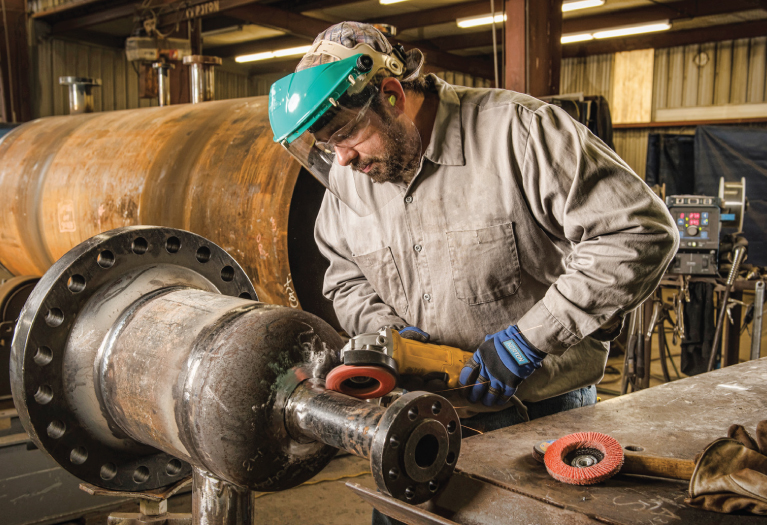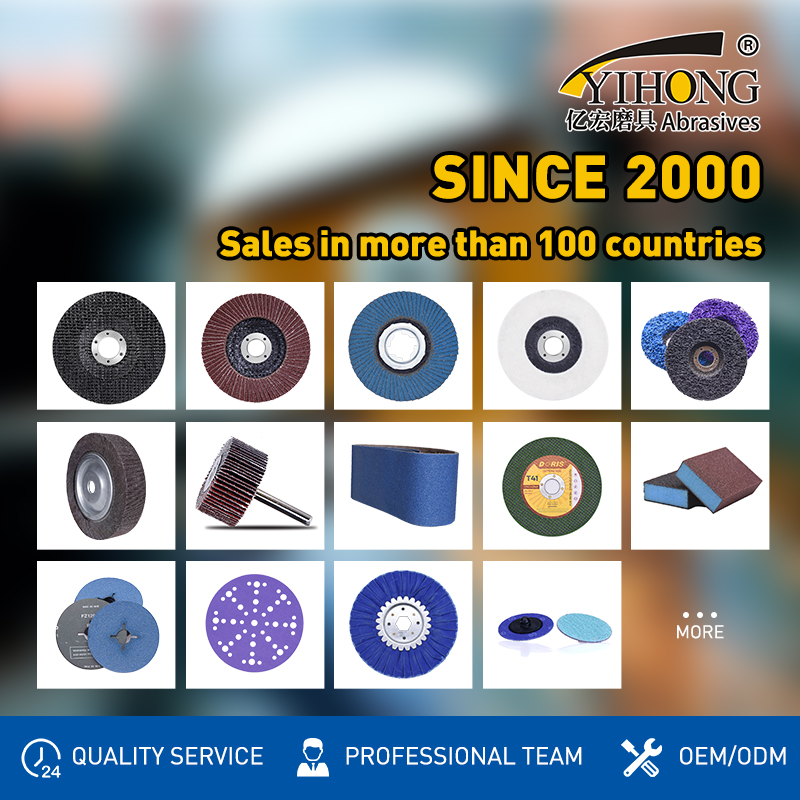What is removed during the grinding process to make the surface even?

In the sanding process, the uneven parts of the material surface are removed, including but not limited to:
1.Burrs and sharp edges: The surface of the newly machined or cast workpiece will have burrs and sharp edges, and grinding can remove these parts to make the surface smoother.
2.Surface roughness: grinding can reduce the surface roughness and improve the surface finish.
3.Oxide and corrosive layers: For metal surfaces, sanding can remove the oxide and corrosive layers from the surface, exposing the fresh surface of the material.
4.Welds and joints: Welds and joints left after welding or joining can be smoothed by sanding to reduce stress concentration points.
5.Machining marks: knife marks or marks left after machining, which can be eliminated by grinding to make the surface more uniform.
6.Uneven coat or paint: For coated or painted surfaces, sanding can remove the uneven parts, making the coat or paint layer smoother.
7. Minor defects and defects: such as small dents, bumps or scratches, these defects can be repaired by grinding to restore the flatness of the surface.
What tools are commonly used in the grinding process?

During the grinding process, a variety of different tools are used according to different materials and grinding needs
1.sandpaper : Used for manual grinding, with different thickness sand, suitable for wood, metal, plastic and other materials.
2.Grinder: electric tools, used for grinding and cutting hard materials such as metal and stone.
3.Angle grinder: a hand-held electric tool, suitable for grinding and polishing of metal, stone and other materials.
4.Polishing machine: Used for metal, wood, plastic and other materials surface polishing, improve the surface finish.
5.Buffing Machine: used to remove burrs and unevenness on the surface of the material to improve the surface finish.
6.Electric sander: hand-held electric tools, suitable for grinding various materials.
7.Pneumatic sander: The use of compressed air as power, suitable for work that requires a long time grinding.
8.Wire drawing machine: A tool for making wire drawing effects on metal surfaces.
9.Belt sander: The use of sand belt for grinding, suitable for large area of grinding work.
10.File: Hand tools, in a variety of shapes and sizes, used for grinding and trimming metal, wood and other materials.
11.Grinding stone: Used for hand grinding and polishing, there are two natural and artificial.
12.Electric polishing wheel: Used for the surface polishing of metal, wood and other materials.
13.Drill bit: used to drill holes in the material, but also for grinding.
14.Milling cutter: used for milling materials, can also be used for grinding.
15.Sandblasting machine: The use of high-speed ejection of sand to polish and clean the surface of the material.
16.Chemical sanding agent: used to remove the oxide layer and rust on the surface of the material.
17.Electric file: Hand-held electric tool for fine grinding work.
18.Polishing paste: Used for manual polishing to improve surface finish.
19.Diamond tools: including diamond grinding wheel, diamond grinding, etc., for grinding hard materials.
20.Electric belt sander: Used for large area grinding and polishing work.
These tools can be used alone or in combination to achieve the best grinding results. Choosing the right tool depends on the type of material, the purpose of grinding, and the desired surface finish.
ADD:
No. 1003 Building 9, Henan E-commerce Industrial Park, High-tech Zone, Zhongyuan District, Zhengzhou, ChinaTEL/FAX:
+8619937510087WhatsApp:
+8619937510087Email:
info@yihongabrasives.com




PRODUCT
FRIENDS LINKS
Quick consulting
Copyright ©Jia County Yihong Abrasives Co.,Ltd All Rights Reserved. Technical Support By Yihong Century Network Technology Co., Ltd. Sitemap

Wechat Service